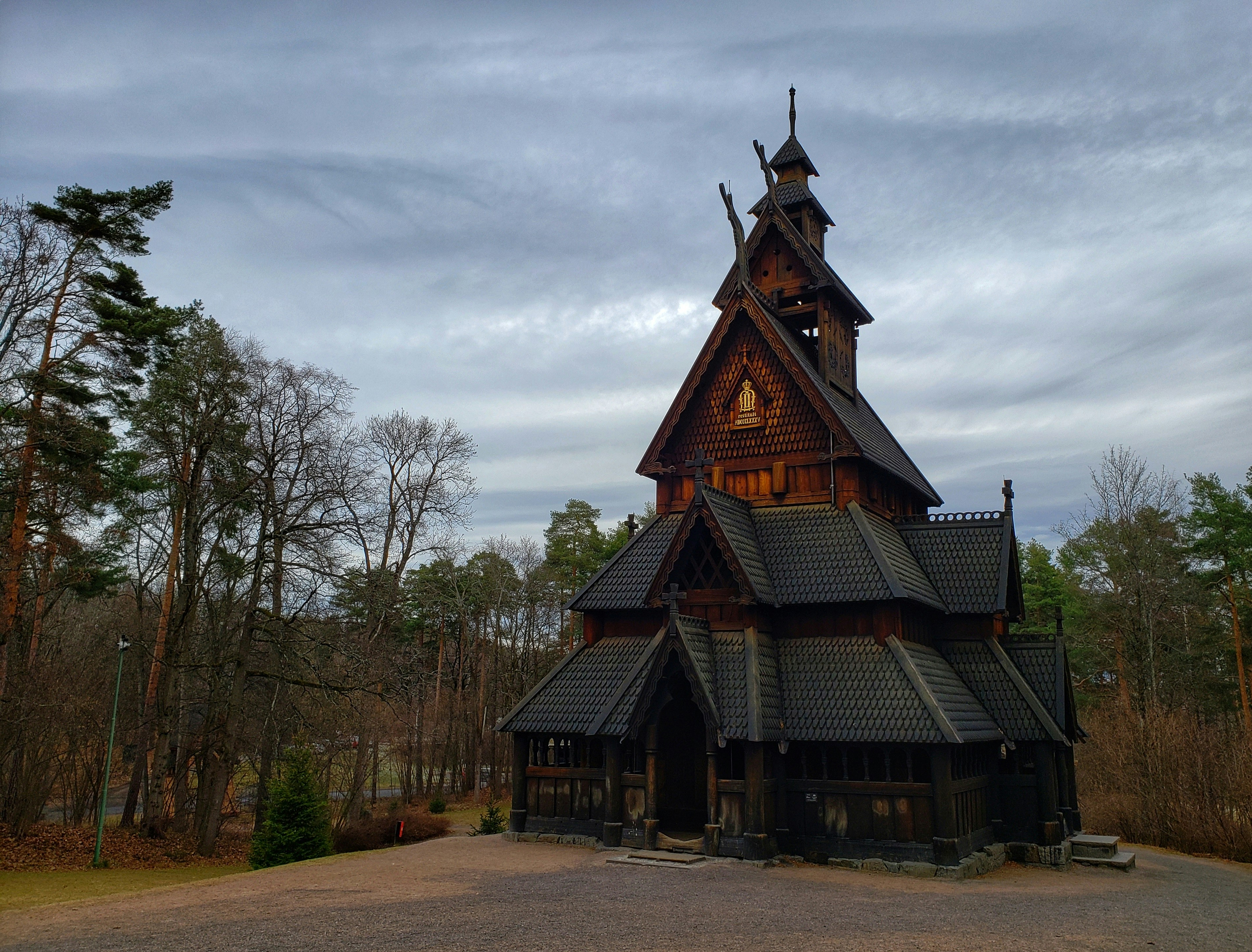
Introduction
In the heart of Walt Disney World’s Epcot, nestled within the Norway Pavilion, stands a scaled-down replica of a Stave Church. This architectural marvel is not just an aesthetic spectacle but also a testament to Norway’s rich cultural history. From its origins to its modern-day representation in one of the world’s most visited theme parks, the journey of Stave Churches is as fascinating as it is enduring. In this article, we delve into their historical evolution, their recreation at Epcot, and how other buildings in the Norway Pavilion draw from Norwegian history.
The Historical Evolution of Stave Churches
Stave churches, or ‘stavkirke’, are a significant part of Norway’s architectural heritage. These wooden structures date back to the medieval era, with their name derived from the building technique involving vertical wooden boards or ‘staves’.
Before the advent of Christianity in Norway around 1000 AD, various sites were used for pagan worship and rituals. As Christianity spread, many of these sites might have been converted into Christian places of worship. During this transition, the architectural style of stave churches emerged, incorporating Christian symbols while sometimes retaining elements of Norse mythology.
The most distinctive feature of these churches is their tiered, steep roofs covered with wooden shingles, designed to withstand heavy snowfall. Inside, many are adorned with intricate carvings, some depicting biblical stories and others reflecting Viking legends.
Unfortunately, out of an estimated 1,000 original stave churches built during the Middle Ages in Norway, only about 28 survive today due to fires and decay. However, those that remain stand as enduring symbols of a time when old beliefs met new faiths.
The Stave Church at Epcot
In the 1980s, Walt Disney World decided to bring a piece of Norway’s history to its Epcot theme park. A team of architects and craftsmen meticulously recreated a scaled-down version of a stave church in the Norway Pavilion.
This replica is not just an architectural marvel but also serves as an exhibit space. Inside, visitors can explore ‘Norsk Kultur: Inspiration for Disney Frozen’, an exhibition that showcases Norwegian culture, artifacts, and how they inspired the popular Disney movie ‘Frozen’.
The church’s design draws heavily from historical stave churches in Norway. Its tiered roof, wooden shingles, and intricate carvings echo the traditional stave churches found in Norway. However, it’s worth noting that while this structure is a faithful representation of its original counterparts, it does not serve any religious purpose.
The Stave Church at Epcot offers visitors a unique opportunity to step back in time and experience a slice of Norwegian history without leaving Florida.
Other Historical References in Norway Pavilion
The Norway Pavilion at Epcot is not just home to the Stave Church but also hosts a variety of other buildings that draw from Norwegian history. The pavilion’s design mirrors a typical Norwegian village, complete with cobblestone streets and traditional Nordic architecture.
One notable feature is the grass-covered roofs found on several buildings. This unique roofing technique, known as ‘turf roof’, has been used in Scandinavia since the Viking times. It serves both practical and aesthetic purposes—providing insulation against cold winters and blending seamlessly with the natural surroundings.
Another highlight is ‘Akershus Royal Banquet Hall’, a replica of Akershus Fortress located in Oslo, Norway. This medieval castle now serves as a restaurant where visitors can enjoy traditional Norwegian cuisine.
In addition, there’s ‘Kringla Bakeri Og Kafe’, modeled after a traditional Norwegian bakery, offering Scandinavian pastries and sandwiches.
These structures collectively offer visitors a vivid glimpse into Norway’s past, enriched with a touch of Disney magic.
Conclusion
The Stave Church at Epcot’s Norway Pavilion is more than just a replica; it’s a tribute to Norway’s rich cultural and architectural heritage. The journey of these churches, from the sites of pagan worship to the Christian architectural marvels, mirrors the evolution of Norwegian society. The other buildings within the pavilion further enhance this historical narrative, offering visitors an immersive experience that blends education with entertainment.
Whether you’re a history enthusiast or a Disney fan, exploring the Norway Pavilion provides a unique opportunity to step back in time and appreciate the enduring charm of Norwegian culture. It’s indeed fascinating how Walt Disney World has managed to encapsulate centuries-old traditions within its magical realm.